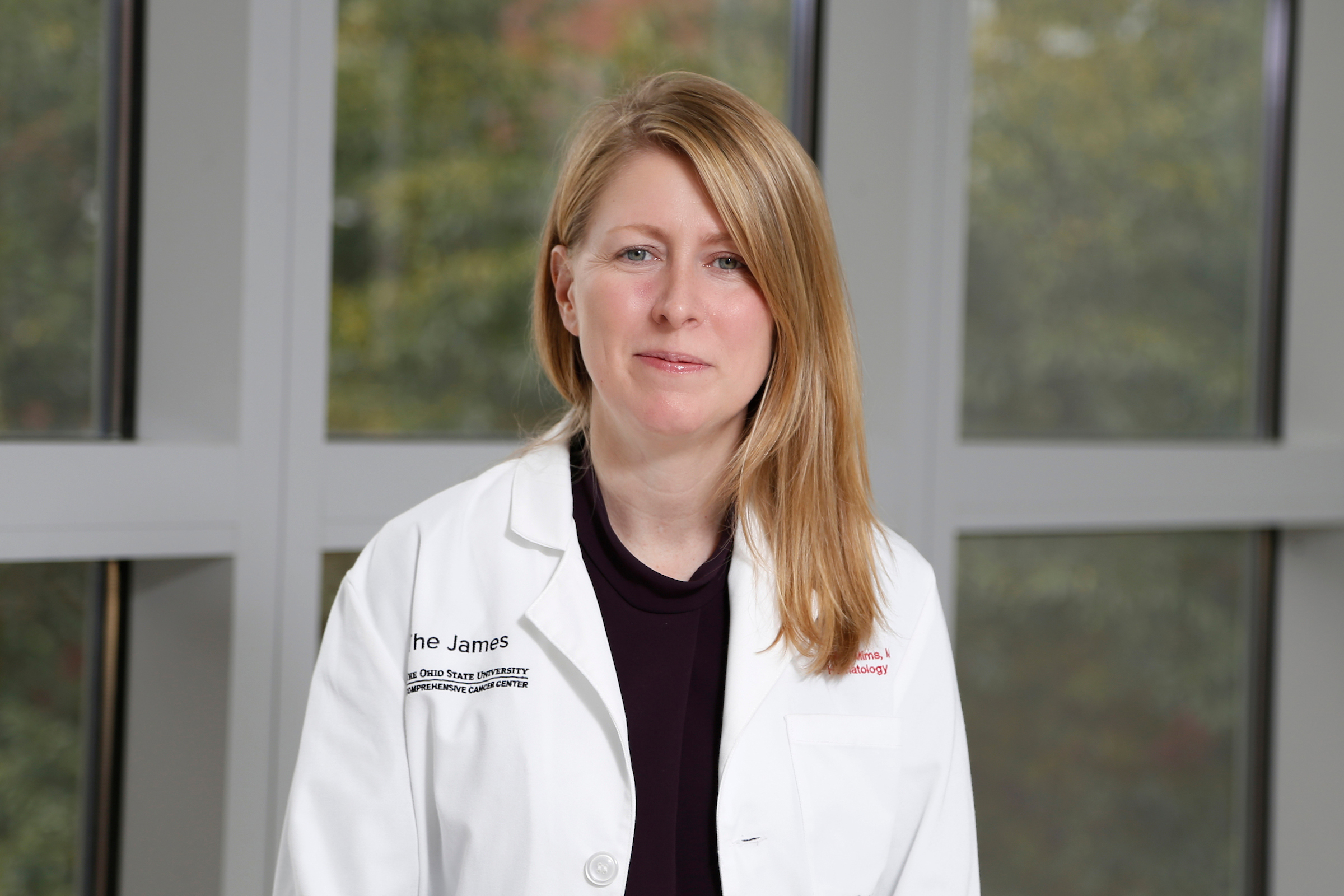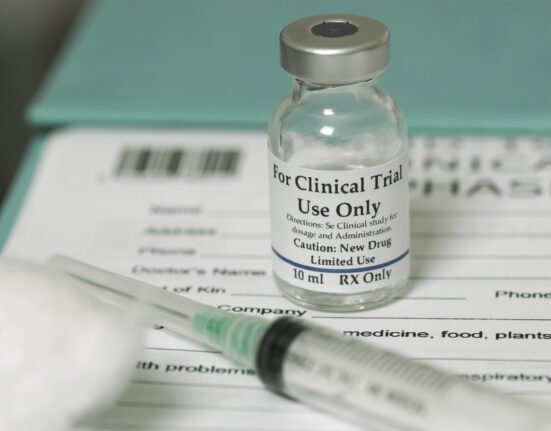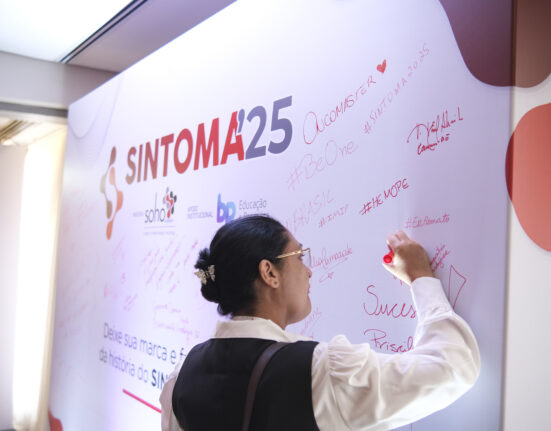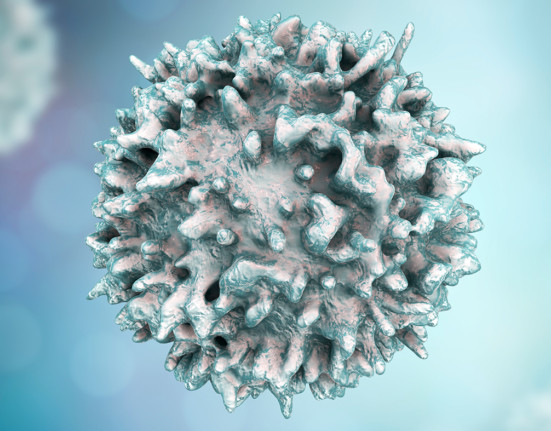Meet Alice Mims, MD, a professor at The Ohio State University and senior medical director of the BeatAML study. Dr. Mims discusses venetoclax’s role in AML care, her commitment to patient-centered care, and how she relaxes.
This interview has been edited for clarity and length.
Where did you grow up and how did you get into hematologic oncology?
I grew up in a small town called Lake City in rural South Carolina with about 10,000 people in the surrounding area. My dad is a recently retired family practitioner, and my mom is a pharmacist. As a child, I wanted to be a vet but had to forego that dream due to being allergic to cats. When I went into medical school, I initially thought I would follow in my dad’s footsteps and be a primary care physician. However, during residency, I rounded on the acute leukemia service with Bayard Powell at Wake Forest, and I loved both the relationships you would quickly develop with patients and the scientific aspect surrounding clinical trials with new therapies being offered to patients.
What interests you about the science of acute leukemia?
Acute leukemia is heterogeneous, and figuring out the best approach for each individual patient is becoming more and more complicated especially in light of all of the new drug approvals over the past ten years. Though it is nice to have more options for patients, it’s hard to know which one may be the better choice and clinical trials are one way to do that. You feel like you’re advancing care and hopefully helping individual patients but also contributing to something bigger and broader than just the patients you’re seeing in your own clinic.
How do you decide the best treatment path for patients?
You have to remember that patients are people and when I talk to my patients, I try to understand their goals. I want to understand what they’re looking to gain from their treatment. We talk about the available data and how that fits into their treatment goals, and why I might recommend one option over another, but ultimately, it’s a decision we make together. I want patients to know that we can always revisit the plan. We can regroup at any point and keep asking questions as we go, to make sure we’re moving in the right direction together, with all the information that’s out there.
What is the Beat-AML study?
I’m a senior medical director for the BeatAML study, which is an umbrella study led by the Leukemia and Lymphoma Society with novel genomic-based approaches for older patients with AML. Within that framework, there is a very exciting substudy being led by Dr. Uma Borate, called OptiAML, which is a randomized study assessing 14 versus 28 days of venetoclax in combination with azacitidine to see if patients can achieve similar complete remission rates with a shorter schedule. I’m really excited about the readout because I think it’s going to be practice-changing for patients with AML. There is concern that the current 28-day venetoclax dosing is too toxic for the majority of patients with AML secondary to myeloid suppression. A shorter duration could open opportunities for safer exploration of triplet therapies with less toxicity, which is key for improving patient outcomes.
Patients are people, and when I talk to my patients, I try to understand their goals.
Will venetoclax remain the primary drug for AML, or will next-generation drugs eventually replace it?
There are a lot of AML subtypes that respond well to venetoclax so I do think it will remain part of our treatment toolbox. However, within its current FDA-label, the regimen is not curing the majority of patients. Hopefully studies exploring its use with intensive chemotherapy or other triplet regimens may help improve upon the current outcomes. There’s potential in using triplets with venetoclax, but we have to think outside the box in targeting new pathways.
How did your mentors impact your career?
John Byrd has been one of my primary mentors since fellowship. I met him when I was a first-year fellow. On one of my first inpatient rotations, I mentioned to him that I was interested in research, and he has really helped me navigate that path. Later, when I moved back to South Carolina for my first faculty position to be closer to family, he again helped me figure out how to continue doing the research I was passionate about when my initial attempts at laboratory research were not panning out. Ultimately, I made the decision to come back to OSU where he gave me a lot of opportunities along with continued mentorship that helped me advance my career. I still appreciate being able to ask for advice anytime, even though we are now at different institutions. I also appreciate that he has been a strong advocate for women. He’s always been understanding of the different factors we, as women, have to balance while navigating academic careers.
Bill Blum is also someone I continue to value as a mentor, as he helped me both in fellowship training and navigating being a new faculty member. He worked with me on different research projects, and he gave me a lot of opportunities to run industry studies to not only better understand the ins and outs of clinical trials but also for networking opportunities.
What advice would you offer early-career clinician-scientists that’s often overlooked?
It is okay to change your mind about your career path at any point and time. If what you are doing is not working, find a different direction for your career. Make sure you are defining your own measures of success and make sure to have a life outside of work.
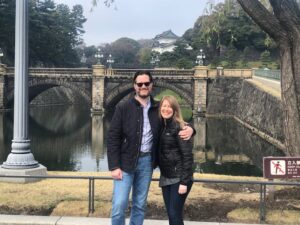
What are your hobbies outside of work?
I love to travel and am excited to be able to do that more now that my daughter is older and we are through the pandemic. One of my favorite trips was for my 40th birthday, when my husband, good friends, and I went to Japan together. Being able to experience different cultures, amazing food and people is such a privilege and I am glad to be able to share that now withmy daughter.
I also love reading fiction as a way to relax from thinking about work and patient cares. I have a book club with my 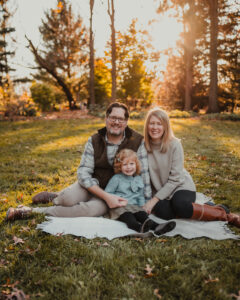 sisters and mom where we meet monthly, so that is a fun way to continue to connect with my family even though we now live in different parts of the country.
sisters and mom where we meet monthly, so that is a fun way to continue to connect with my family even though we now live in different parts of the country.
If you could have dinner with any hematologist, living or deceased, who would you choose and why?
Janet Rowley and Clara Bloomfield are two people that I would choose. They are both pioneers in the field of acute leukemia from a time where there were not many women hematologist. I would love to learn more about the trials and tribulations they had to go through as women in medicine when they started, and how they balanced all these different aspects in their personal lives. It was such a different time and fortunately now women are commonplace as leaders in hematology and oncology research. This change in culture is really thanks to them and others and I am very appreciative of the roles they played.
Enjoyed this Pathways & Perspectives with Alice Mims? Discover Charles Craddock’s work here

